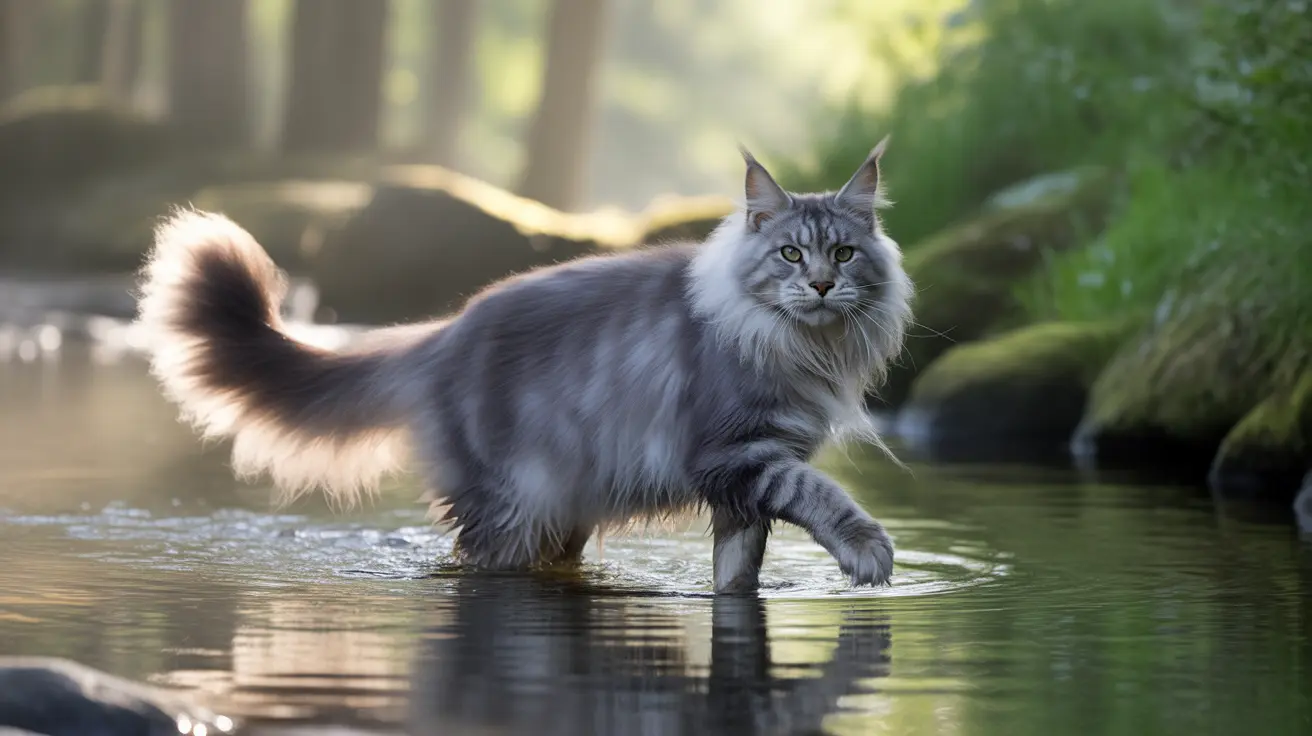Have you ever wondered if cats have webbed feet? The answer might surprise you. All cats, both domestic and wild, possess partially webbed feet - a fascinating evolutionary adaptation that contributes to their remarkable agility and survival skills.
In this comprehensive guide, we'll explore the unique structure of cat paws, examine why cats have webbed feet, and understand how this feature benefits our feline friends in various ways.
The Nature of Cat Webbed Feet
Every cat, from your household companion to majestic tigers, has partial webbing between their toes. This webbing consists of elastic skin that stretches between the digital pads, though it's not as pronounced as what you'd find in aquatic animals like ducks or otters.
The degree of webbing varies among feline species, with big cats like Sumatran tigers and jaguars displaying more prominent webbing to support their swimming abilities and wetland hunting practices.
Evolutionary Benefits of Webbed Paws
Swimming Capabilities
While most domestic cats aren't fond of water, their webbed feet provide natural swimming ability when needed. The webbing helps them paddle more effectively, pushing against water with greater surface area for better propulsion.
Enhanced Hunting and Stalking
The partial webbing between toes allows cats to:
- Move silently across various surfaces
- Distribute weight more evenly when stalking prey
- Maintain stability on soft or unstable terrain
- Navigate muddy or marshy areas without sinking
Anatomical Structure of Cat Paws
Cat paws are marvels of evolutionary engineering, featuring several key components:
Digital Pads and Toe Beans
Each toe contains a soft, cushioned pad (commonly known as "toe beans") that helps absorb impact during jumping and landing. These pads also contain sensitive nerve endings that help cats assess terrain and detect vibrations.
Supporting Structures
- Metacarpal/metatarsal pads for weight distribution
- Carpal pads for additional grip and protection
- Retractable claws for hunting and climbing
- Scent glands for territorial marking
Caring for Your Cat's Webbed Feet
While webbed feet are natural and beneficial, they require proper care:
- Regular inspection for cuts, thorns, or foreign objects
- Gentle cleaning when necessary
- Monitoring for signs of infection or injury
- Trimming excessive fur between toes in long-haired breeds
Frequently Asked Questions
Do all cats have webbed feet, and how does this webbing help them?
Yes, all cats have partially webbed feet. This webbing helps with balance, swimming ability, and distributing weight while walking or hunting. It's an evolutionary adaptation that benefits both domestic and wild cats.
Why do some big cats like tigers and jaguars have more pronounced webbing between their toes?
Big cats like tigers and jaguars have more pronounced webbing because they frequently swim and hunt in aquatic environments. The enhanced webbing helps them navigate through water more efficiently and provides better stability in wetland habitats.
How does the partial webbing in cat paws aid in their hunting and climbing abilities?
The partial webbing increases the surface area of their paws, providing better grip and stability during hunting and climbing activities. It helps cats move silently and maintain balance while stalking prey or scaling trees.
Can the webbing between a cat's toes affect their swimming skills even though most cats dislike water?
Yes, the webbing between a cat's toes naturally enables them to swim effectively when necessary, even if they prefer to avoid water. The webbing helps them paddle and push against water more efficiently.
What should cat owners know about caring for their cat's webbed paws to avoid injuries or infections?
Cat owners should regularly inspect their cat's paws for signs of injury or infection, keep the areas between toes clean and free from debris, and watch for any limping or excessive licking that might indicate discomfort. Long-haired cats may need regular trimming of fur between toes to prevent matting.
Understanding your cat's webbed feet helps you better appreciate their remarkable physical adaptations and ensure proper care for these essential appendages. Whether your cat is an indoor explorer or outdoor adventurer, their partially webbed paws play a crucial role in their agility, survival, and overall well-being.






